Introduction
Welcome to a journey through the annals of cricket history, where the sport that’s often associated with gentlemen in white takes some truly bizarre twists and turns. Cricket, known for its traditions and rules, has also witnessed moments that defy explanation and logic. In this blog post, we delve into the most peculiar and unusual incidents that have left
1. Underarm Incident
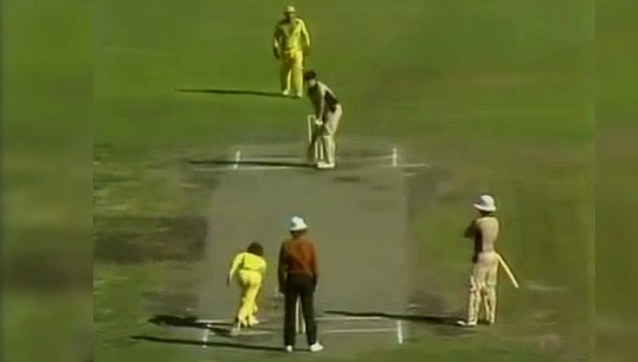
One of the most infamous and bizarre moments in cricket history occurred on February 1, 1981, during a One Day International (ODI) match between Australia and New Zealand at the Melbourne Cricket Ground (MCG).
The situation was tense; New Zealand needed six runs off the final ball to tie the match. The Australian captain, Greg Chappell, decided to take a controversial and unsportsmanlike approach to secure victory. He instructed his younger brother, Trevor Chappell, who was bowling the final over, to deliver the ball underarm, rolling it along the ground to prevent the batsman from hitting a six.
The underarm delivery was legal at the time, but it was considered against the spirit of the game. The MCG crowd erupted in anger, and cricket fans around the world were shocked by this blatant attempt to manipulate the outcome of the match.
As a result of the underarm incident, New Zealand’s batsman, Brian McKechnie, could only block the ball, and Australia won the match. However, the incident sparked outrage and condemnation, leading to changes in the rules of cricket. Underarm deliveries in ODIs were subsequently banned, and the Chappell brothers faced severe backlash, with Greg Chappell’s reputation taking a significant hit.
The incident serves as a reminder of the importance of sportsmanship and fair play in cricket. It remains one of the most controversial moments in the sport’s history and is often cited as an example of what not to do on the
Key Takeaways:
- The Underarm Incident took place during an ODI match between Australia and New Zealand in 1981.
- Australia’s captain, Greg Chappell, instructed his brother Trevor to bowl an underarm delivery on the final ball to prevent New Zealand from scoring a six.
- While technically legal, the underarm delivery was widely condemned as unsportsmanlike.
- Rule changes subsequently banned underarm deliveries in ODIs.
- The incident remains a controversial and infamous moment in cricket history.
2. Bodyline Series
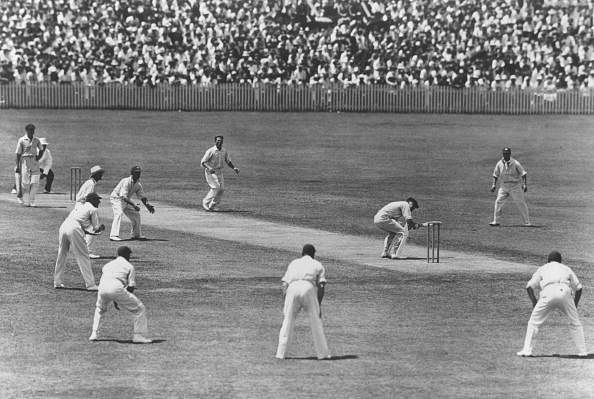
The Bodyline Series, also known as the “Bodyline Controversy” or “Leg Theory,” was one of the most contentious chapters in the history of cricket. This historic Test cricket series took place between England and Australia during the 1932-1933 season.
The controversy stemmed from England’s tactics, specifically their bowlers’ strategy, which involved targeting the Australian batsmen with short-pitched deliveries aimed at their bodies. The English captain, Douglas Jardine, devised this strategy to counter the prolific run-scoring abilities of Australia’s legendary batsman, Sir Donald Bradman.
The key bowler implementing the tactic was Harold Larwood, who consistently bowled at high speeds and directed the ball towards the batsman’s upper body and head. This strategy was intended to restrict Bradman’s scoring opportunities and put him under immense pressure.
The Bodyline tactic was highly effective, but it also led to injuries among the Australian batsmen, strained relations between the two teams, and public outrage. The Australian media and public were incensed by what they perceived as unsportsmanlike conduct by the English team.
The controversy reached its peak during the third Test in Adelaide, where tensions on and off the field were running high. Umpires had to intervene multiple times to defuse confrontations, and the series became a diplomatic issue between the two countries.
In response to the Bodyline tactic, the Australian captain, Bill Woodfull, famously stated, “There are two teams out there; one is playing cricket, and the other is not.” This statement encapsulated the outrage felt by the Australians and the cricketing world.
The Bodyline Series had a lasting impact on the game. As a result of the controversy, cricket authorities implemented new rules and regulations regarding the number of fielders on the leg side to prevent similar tactics in the future. This series remains a significant part of cricket history, remembered for its fierce competition and the debates it sparked about sportsmanship and the ethics of the game.
Key Takeaways:
- The Bodyline Series occurred during the 1932-1933 cricket season between England and Australia.
- England employed a controversial tactic of bowling short-pitched deliveries at the Australian batsmen, known as Bodyline, to counter Sir Donald Bradman.
- The tactic led to injuries, strained relations, and public outrage.
- The controversy prompted changes in cricket rules to prevent similar tactics in the future.
- The Bodyline Series remains a significant and debated chapter in cricket history.
3. Monkeygate Scandal
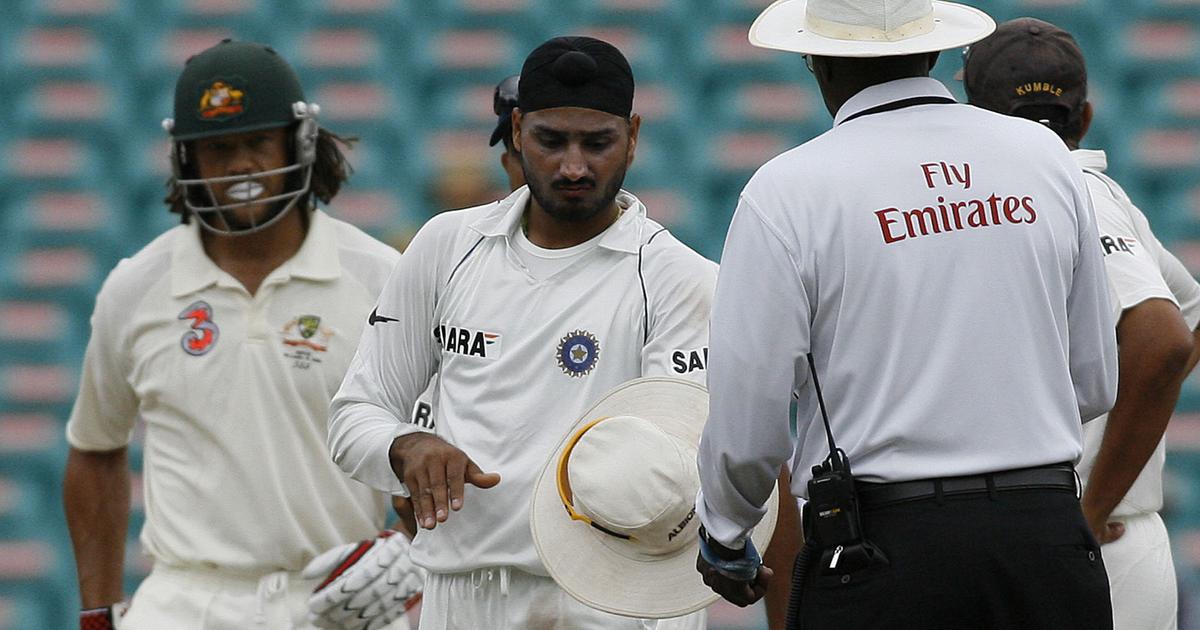
The Monkeygate Scandal, which unfolded during the 2007-2008 Border-Gavaskar Trophy series between India and Australia, remains one of the most controversial and heated episodes in cricket history. This incident centered around allegations of racial abuse and a subsequent international uproar.
The controversy began during the second Test match in Sydney when Indian off-spinner Harbhajan Singh was accused of racially abusing Australian all-rounder Andrew Symonds. It was alleged that Harbhajan had used a racial slur, referring to Symonds as a “monkey” during an on-field altercation.
Amidst the escalating tensions, the Indian team threatened to abandon the tour if Harbhajan Singh was charged and banned. The matter was further complicated by conflicting testimonies from players and officials. In the end, Harbhajan Singh was charged with a Level 3 offense under the ICC Code of Conduct.
The Monkeygate Scandal reached a boiling point during the subsequent hearing, where Indian cricket’s top brass fiercely defended Harbhajan Singh, and the Australian players stood by their version of events. The hearing eventually cleared Harbhajan of the racial abuse charge due to a lack of concrete evidence. Instead, he was found guilty of a lesser charge of using abusive language and was fined.
This scandal had far-reaching consequences, straining diplomatic relations between India and Australia and exposing the deep-seated tensions within international cricket. The incident also led to discussions about the role of match referees, the need for stronger anti-racism measures in cricket, and the importance of respecting the spirit of the game.
Key Takeaways:
- The Monkeygate Scandal occurred during the 2007-2008 Border-Gavaskar Trophy series between India and Australia.
- Indian cricketer Harbhajan Singh was accused of racially abusing Australian player Andrew Symonds by calling him a “monkey.”
- The scandal led to tensions between the teams, threats of tour abandonment, and a heated hearing.
- Harbhajan Singh was cleared of the racial abuse charge but fined for using abusive language.
- The incident highlighted the need for better anti-racism measures in cricket and respect for the spirit of the game.
4. The Flying Bat
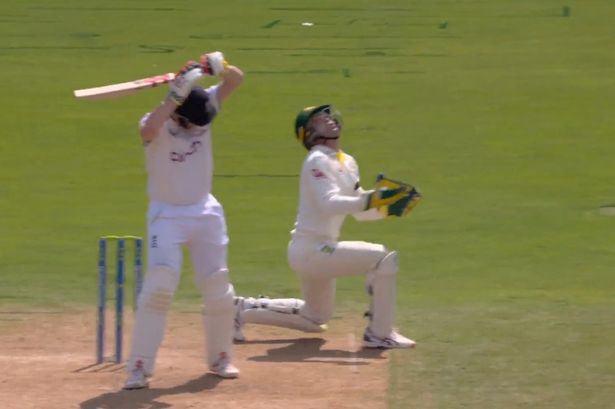
Cricket has its fair share of peculiar moments, but one that stands out for its sheer unpredictability and humor is the incident known as “The Flying Bat.” This unforgettable occurrence took place during a Test match between England and South Africa in 1999.
The incident unfolded during a match in Johannesburg when South African fast bowler Allan Donald delivered a fiery bouncer to England’s batsman, Mike Atherton. Atherton, in an attempt to evade the ball, instinctively raised his bat for protection. However, the impact of the ball dislodged the rubber handle of Atherton’s bat, sending it flying through the air.
What followed was a comical spectacle as the detached bat soared above the pitch, narrowly missing the wicketkeeper before landing several feet away. The crowd and players, including Atherton himself, burst into laughter at the absurdity of the situation.
This unusual incident provided a moment of levity in the intense world of Test cricket. It also highlighted the importance of equipment quality and durability in the sport. Atherton, despite losing his bat, continued his innings using a substitute bat, and the match resumed without further disruptions.
While “The Flying Bat” incident didn’t have a profound impact on the outcome of the match or cricket history, it remains etched in the memories of fans as one of the quirkiest and most lighthearted moments ever witnessed on the cricket field.
Key Takeaways:
- “The Flying Bat” incident occurred during a Test match between England and South Africa in 1999.
- Mike Atherton’s bat handle was dislodged by a bouncer from Allan Donald, causing the bat to fly through the air.
- The incident provided a humorous and light-hearted moment in Test cricket.
- It emphasized the importance of equipment quality in cricket.
- While not a game-changing event, “The Flying Bat” remains a memorable and beloved cricketing moment.
5. Rain Rules Controversy
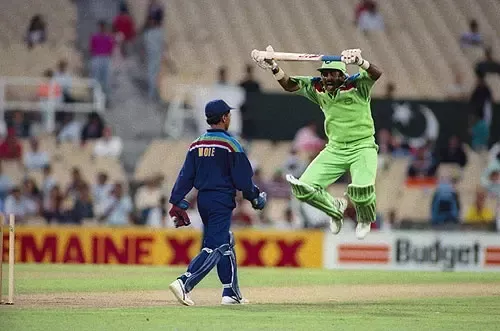
The Rain Rules Controversy in cricket centers around the challenges of determining outcomes and allocating points in rain-affected matches. Rain interruptions have always been a part of the sport, but the rules governing such situations have led to heated debates and disputes over the years.
The controversy stems from the complexity of cricket matches, which can span several hours or even days. Rain interruptions can significantly disrupt the flow of the game and lead to unfair outcomes. To address this, cricket authorities have established a set of rules and methods to decide matches with reduced overs or interrupted play.
One of the most debated rain rules is the Duckworth-Lewis-Stern (DLS) method, which was introduced to provide a more accurate way of recalculating targets in limited-overs matches affected by rain. The DLS method takes into account the number of wickets lost, runs scored, and overs remaining to determine a revised target for the chasing team.
However, the DLS method, despite its mathematical precision, has faced criticism for being overly complicated and difficult for fans and players to understand. Matches decided by DLS often result in contentious outcomes, sparking debates over whether the method is truly fair.
Another point of contention in rain-affected matches is the decision to call off a game prematurely or to wait for improved weather conditions. In some cases, matches have been abandoned when there was a chance to resume play, leaving fans and teams frustrated.
The Rain Rules Controversy has prompted cricket authorities to continuously review and refine the rules to strike a balance between fairness and simplicity. Various alternatives and modifications to the DLS method have been proposed and tested to address the concerns of cricket stakeholders.
While rain will always remain an unpredictable element in cricket, the ongoing efforts to improve rain rules aim to ensure that the impact of weather interruptions on match outcomes is minimized and that the game remains enjoyable for both players and fans.
Key Takeaways:
- The Rain Rules Controversy revolves around determining outcomes in rain-affected cricket matches.
- The Duckworth-Lewis-Stern (DLS) method is a widely used rain rule, but it has faced criticism for its complexity.
- Decisions to call off matches prematurely or wait for improved weather conditions have also sparked debates.
- Cricket authorities continuously review and refine rain rules to balance fairness and simplicity.
- The goal is to ensure that rain interruptions have minimal impact on match outcomes and maintain the enjoyment of the game.
6. The Oval Test Riot
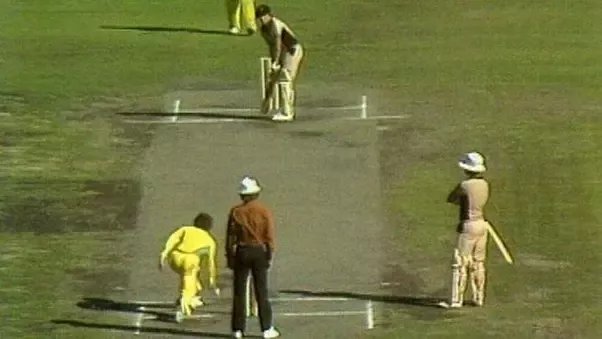
The Oval Test Riot, also known as the “The Oval Riots,” was a dark chapter in cricket history that unfolded during a Test match between England and Australia in August 1971 at The Oval cricket ground in London. The incident was not a result of on-field controversy but rather a reflection of the political tensions of the time.
The backdrop of the Oval Test Riot was the controversy surrounding the South African apartheid regime. South Africa’s apartheid policies, which enforced racial segregation and discrimination, had caused global outrage and led to sporting boycotts against South African teams.
During the Test match, protesters gathered outside The Oval to protest against England’s decision to tour South Africa, which was perceived as support for the apartheid regime. Demonstrators called on England to cancel the tour and take a stand against apartheid.
As the protest escalated, a group of activists managed to breach security and enter the cricket ground. They disrupted play by unfurling anti-apartheid banners, invading the pitch, and causing chaos. Umpires were forced to stop the match, and players retreated to the dressing rooms for safety.
The situation took a particularly dangerous turn when a group of protesters set fire to the stands. The authorities struggled to regain control, and it became evident that the match could not continue. Eventually, the Test match was abandoned, with no result declared.
The Oval Test Riot was a stark reminder of the power of sports as a platform for political statements and the strong sentiments surrounding apartheid. It drew international attention and added momentum to the anti-apartheid movement in sports.
Ultimately, the protest and subsequent abandonment of the match contributed to the cancellation of England’s planned cricket tour of South Africa, which was a significant victory for anti-apartheid activists. The incident serves as a historical marker of cricket’s role in raising awareness about important social and political issues.
Key Takeaways:
- The Oval Test Riot occurred during a Test match between England and Australia in August 1971.
- Protesters demonstrated against England’s cricket tour of South Africa, seen as support for the apartheid regime.
- Protesters breached security, disrupted the match, and set fire to stands.
- The Test match was abandoned without a result.
- The incident contributed to the cancellation of England’s tour of South Africa and highlighted cricket’s role in addressing political issues.
7. World Cup Final Tie

The 2019 ICC Cricket World Cup final will forever be etched in cricketing history as one of the most thrilling and dramatic matches ever played. The final, held at Lord’s Cricket Ground in London, saw England and New Zealand face off in a contest that ended in a rare and unforgettable tie.
The World Cup final had already been a rollercoaster ride with moments of brilliance, drama, and tension. Both teams had played exceptionally well throughout the tournament, and it all came down to this single game to determine the champion.
New Zealand, batting first, posted a total of 241 runs, a competitive but not insurmountable score. England’s chase had its moments of doubt, with wickets falling and pressure mounting. Ben Stokes, England’s hero of the day, held the innings together with an outstanding knock, finishing on 84 not out.
As the match reached its climax, England needed nine runs off the final three balls. Stokes struck a boundary, and then, in a dramatic turn of events, inadvertently deflected a throw from the boundary with his bat as he dived to complete a second run. The ball ricocheted to the boundary, resulting in an additional four runs for England.
With two runs required off the last ball, the scores were tied, and the World Cup final would be decided by a Super Over, a one-over-per-side decider. Remarkably, even the Super Over ended in a tie as both teams scored 15 runs each. England was declared the winner based on the boundary count rule, having scored more boundaries throughout the match and Super Over combined.
The World Cup final tie was a testament to the incredible competitiveness of the two teams and the thrilling nature of cricket. It was a day of heart-stopping moments, with the fate of the World Cup hanging in the balance until the very end.
The match and the subsequent controversy surrounding the boundary count rule sparked discussions about whether such a rule was the fairest way to decide a World Cup final. Nonetheless, for cricket fans around the world, the 2019 World Cup final will be remembered as an epic clash that showcased the spirit of the game and the drama that cricket can provide on its biggest stage.
Key Takeaways:
- The 2019 ICC Cricket World Cup final ended in a dramatic tie between England and New Zealand.
- Ben Stokes played a pivotal role in England’s chase, scoring 84 not out.
- A rare incident where a deflection off Stokes’ bat resulted in crucial extra runs added to England’s total.
- The match was decided by a Super Over, which also ended in a tie.
- England was declared the winner based on the boundary count rule.
- The 2019 World Cup final will be remembered as one of the most thrilling matches in cricket history.
Presenting you the #️⃣1️⃣ Team of Cricket #INDvsAUS pic.twitter.com/NmdQO0krpE
— RVCJ Media (@RVCJ_FB) September 22, 2023
FAQs
Cricket has always been a sport filled with surprises and peculiar incidents that leave fans scratching their heads. Here are some frequently asked questions about the bizarre moments in cricket history:
Q1: What was the Underarm Bowling Incident?
The Underarm Bowling Incident occurred during a One Day International match between Australia and New Zealand in 1981. In a controversial move, the Australian bowler Greg Chappell instructed his brother Trevor Chappell to roll the final delivery underarm to prevent the batsman from hitting a six, leading to widespread criticism and a change in the rules.
Q2: Tell me more about the Flying Bat Incident.
In 2017, during a Big Bash League match, a batsman’s shot caused his bat to slip from his hands, flying across the pitch and narrowly missing the fielders. This unexpected event left both players and spectators astonished, showcasing the unpredictable nature of the game.
Q3: What are some notable Ball Tampering Scandals?
Ball tampering has been a controversial topic in cricket. Notable incidents include the infamous 2018 Australian ball-tampering scandal, where players were caught using sandpaper to alter the condition of the ball, leading to suspensions and public outcry. Several other instances have been reported over the years, raising questions about the spirit of the game.
Q4: Explain the Mankading Controversies.
Mankading refers to a bowler running out the non-striking batsman if they leave the crease before the ball is bowled. While considered a legitimate dismissal, it often sparks debates about sportsmanship. Notable incidents involve players like Vinoo Mankad and Ravi Ashwin, leading to discussions on the ethical boundaries of the game.
Q5: What is the Rain Rule Fiasco?
The Rain Rule, used in limited-overs cricket, calculates revised targets for teams based on the number of overs bowled and the resources available. However, its complexity and occasional inconsistencies have led to confusion. Matches have been affected by rain rule calculations, creating contentious situations and leaving fans bewildered.
Q6: Can you list some Bizarre Dismissals?
Cricket has witnessed numerous bizarre dismissals, including being hit-wicket while celebrating a century, obstructing the field, and handling the ball. These unconventional ways of getting out add a touch of unpredictability to the game, showcasing the diverse ways players can be dismissed.
Q7: Share instances of Unusual Celebrations.
Players often express their joy and relief in unique ways after achieving milestones or winning matches. From cartwheels to dance moves, these celebrations entertain fans and add a sense of humor to the game. Such moments remind us that cricket is not only about skills but also about enjoyment and camaraderie.
Cricket’s bizarre moments continue to captivate audiences, reminding us of the sport’s unpredictable nature. These FAQs highlight some of the most unusual incidents, controversies, and celebrations that have become an integral part of cricket’s rich history.
Conclusion
Cricket, with its rich history and countless matches, has always been a sport filled with surprises and unforgettable moments. From controversial incidents to bizarre occurrences, the game has provided fans with stories that are both astonishing and amusing. Exploring these bizarre moments in cricket history not only entertains but also reminds us of the unpredictable nature of sports. As we look back at these incidents, it’s essential to appreciate the spirit of the game that prevails even in the midst of peculiar events. Cricket continues to capture our hearts, not just with its extraordinary talent and intense matches, but also with these bizarre incidents that add a unique flavor to the sport.
As we conclude our journey through the most bizarre moments in cricket history, it’s evident that the game’s charm lies in its ability to keep fans on the edge of their seats, waiting for the next unexpected twist. From underarm bowling controversies to unusual celebrations, cricket has seen it all. These moments, etched in the annals of cricketing history, serve as a reminder that in sports, anything can happen. As we eagerly anticipate future matches and tournaments, we can be certain that the world of cricket will continue to surprise us, leaving fans in awe and ensuring that the sport remains not just a game, but a source of endless fascination and excitement.
